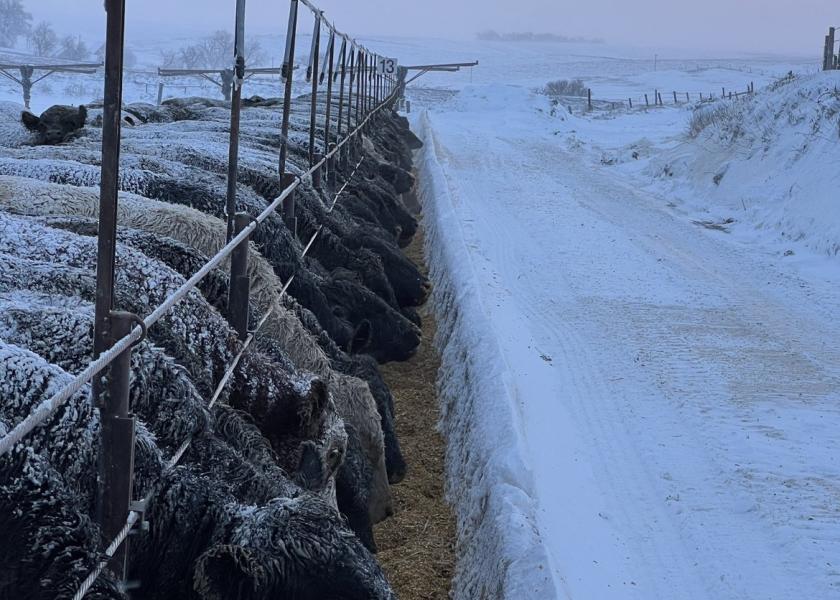Markets: Cattle Steady to Softer in Weather Trade

Brutal winter weather disrupted cattle markets and significantly curtailed cattle harvest in western Kansas. Monday’s blizzard forced Tyson Foods to cancel both shifts at its plant in Holcomb on Tuesday while Cargill shuttered its Dodge City plant due to a loss of power.

As a result of the disruption, estimated weekly cattle slaughter was 549,000 head, compared to 660,740 head the same week a year ago. The year-to-date total was estimated to be down 10.2% from 2023.
Trade in the North was called moderate at $173 to $175 per cwt. live and $273 to $275 per cwt. dressed, $1 lower than last week. Light trade in the South at $172 per cwt. was steady to $1 lower.
Feeder cattle traded mixed at $6 lower to $4 higher. Calves also sold mixed at $4 lower to $8 higher.
Wholesale beef prices posted significant gains. Choice boxed beef closed Friday at $289.26 per cwt., a weekly gain of $12.10 per cwt. Select boxed beef closed Friday at $271.85 per cwt., a gain of $12.32 for the week.
February live cattle futures fell 42 1/2 cents to $171.375 and nearer the session low. For the week, February cattle rose 80 cents. March feeder cattle futures rose 30 cents to $227.70, near mid-range and hitting a six-week high. For the week, March feeders rose $3.55.
Not a bad week for the cattle futures markets bulls. Friday’s bullish weekly high close in March feeders sets the stage for follow-through technical buying in that market next Tuesday. Markets are closed Monday for the Martin Luther King holiday. Focus next week will also be on wintry weather in cattle country. Heavy snow, blizzard conditions and extreme cold in the Midwest this week and in the coming days have reduced packers’ urgency to aggressively bid for cattle late this week, with only light sales so far at generally steady price levels in the far northern market. For many feedlot operators, getting cattle to market next week will be challenging, and the animals, themselves, will find it difficult to gain or keep weight.







